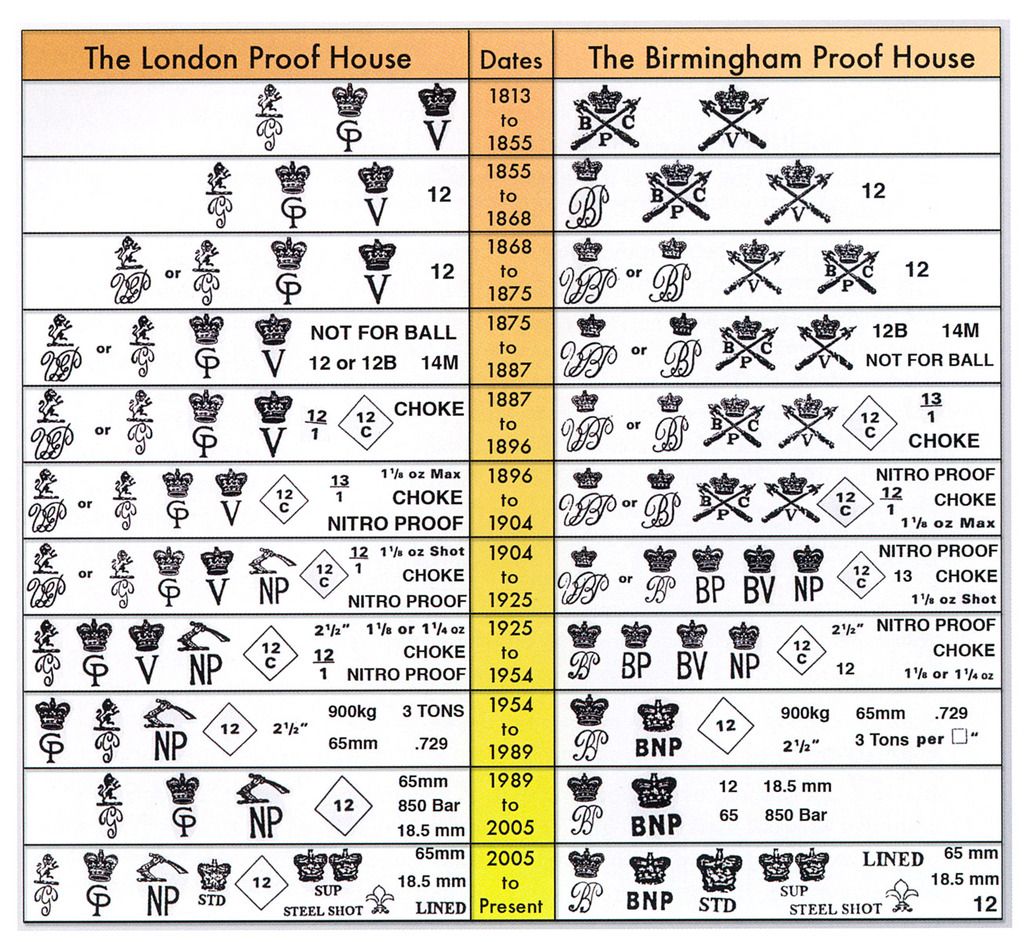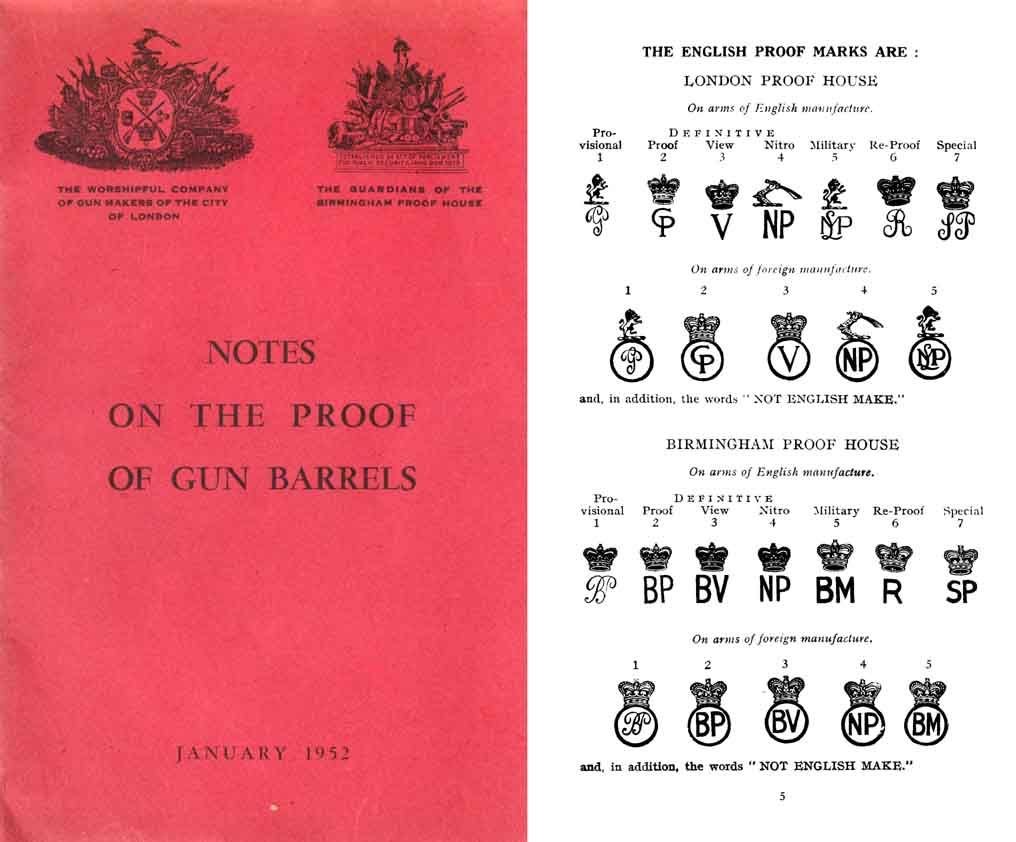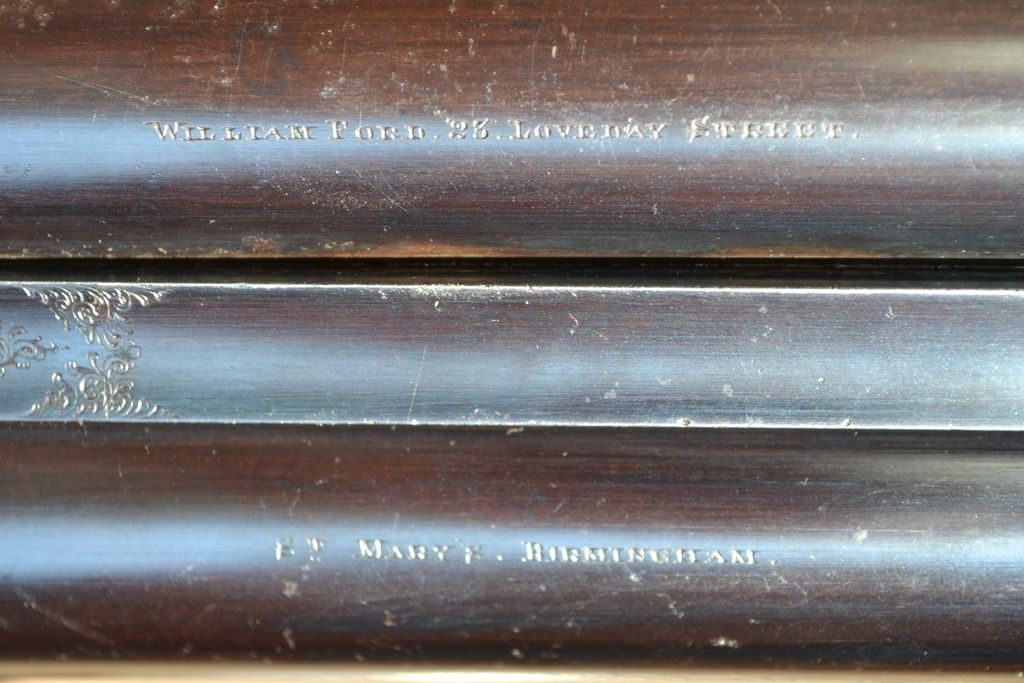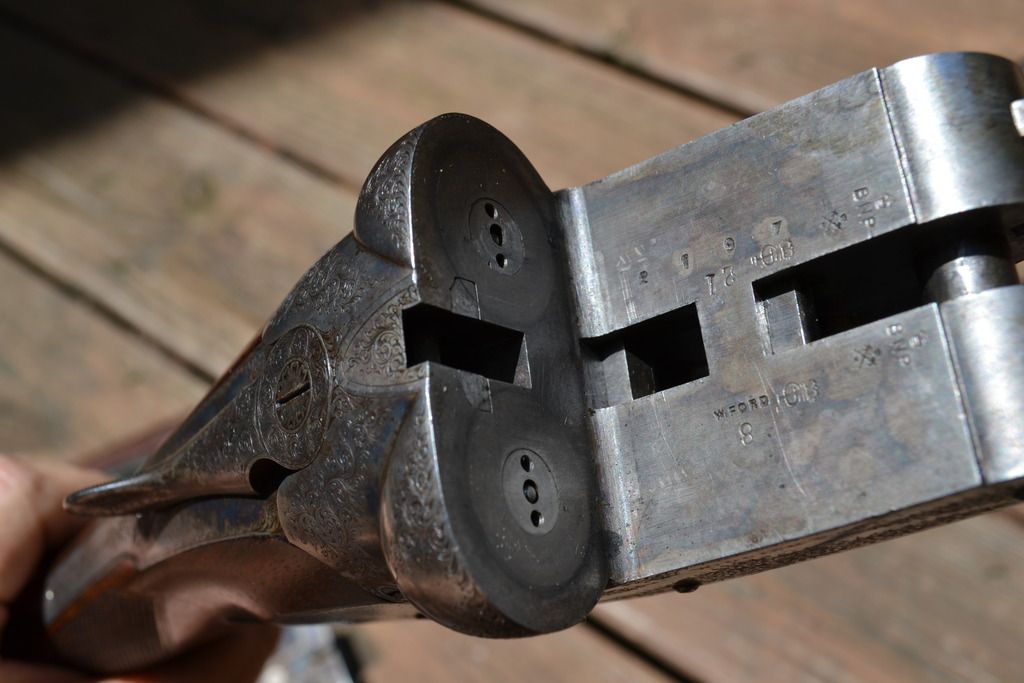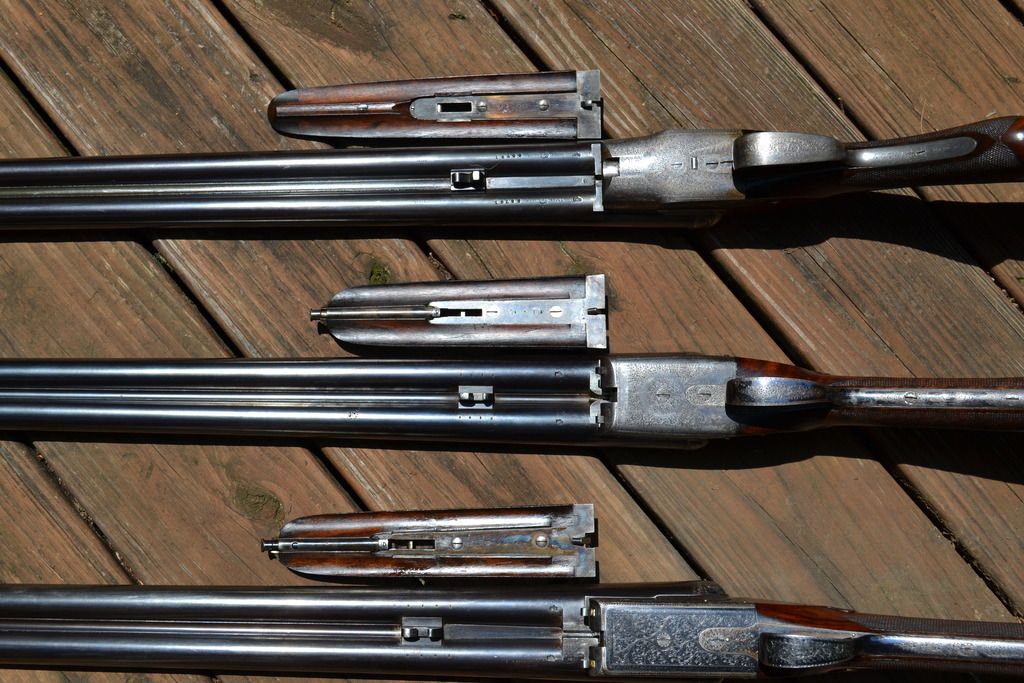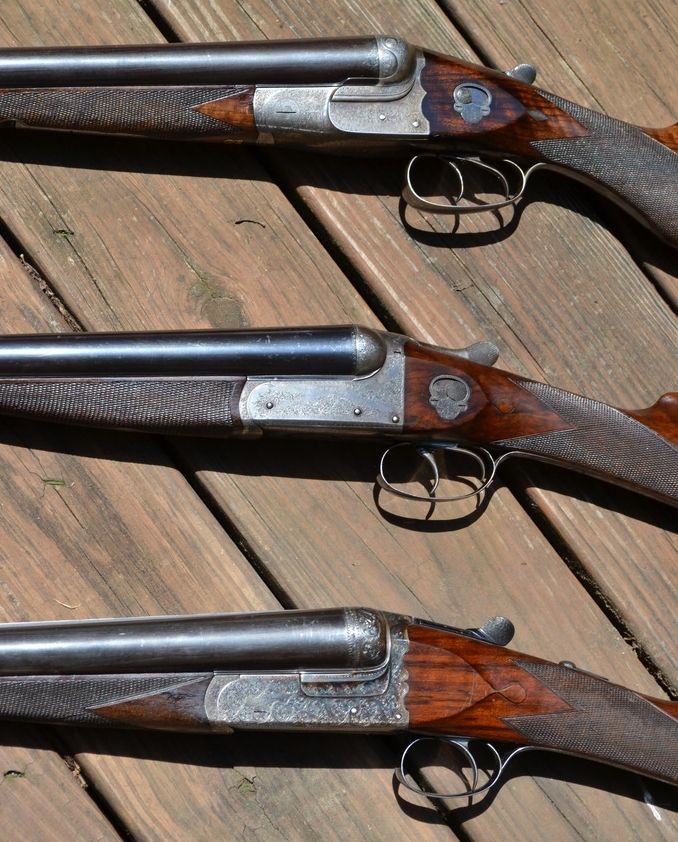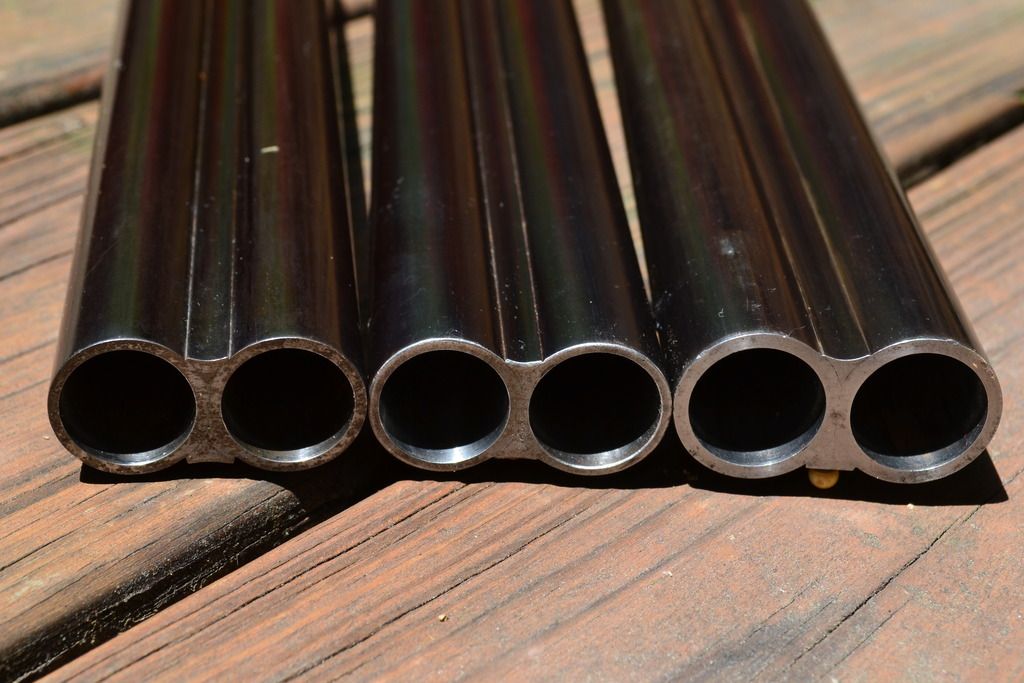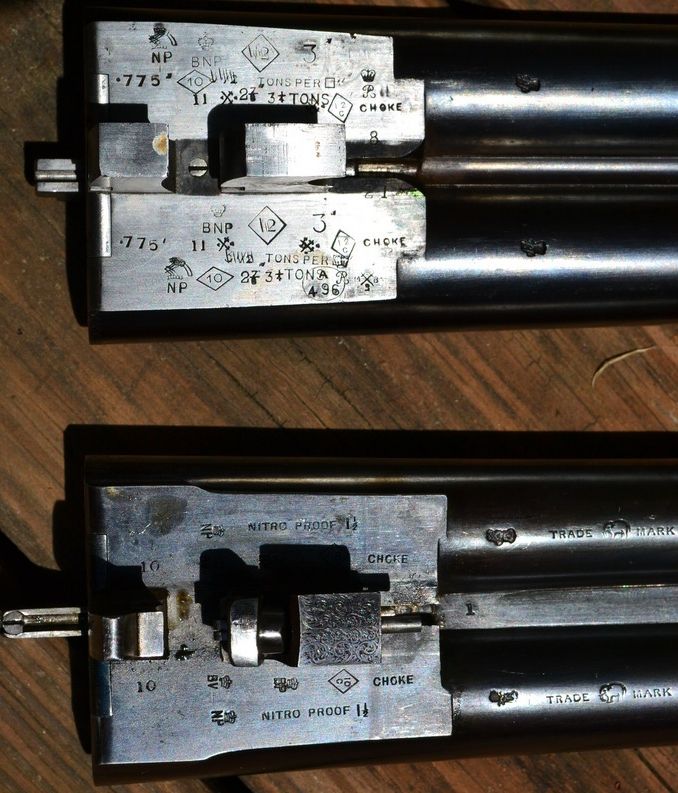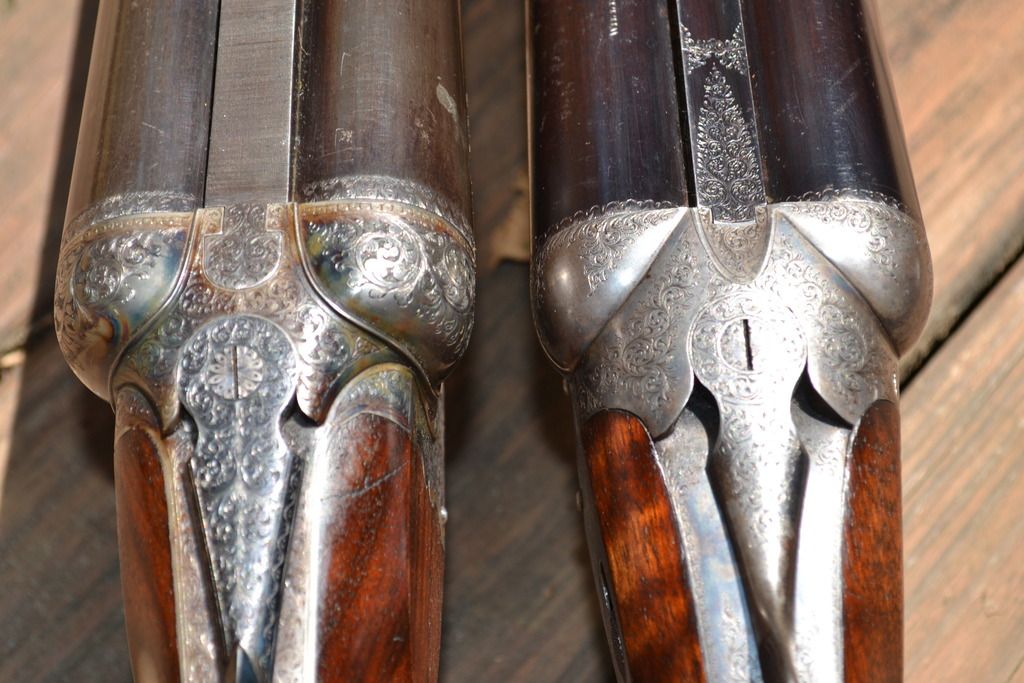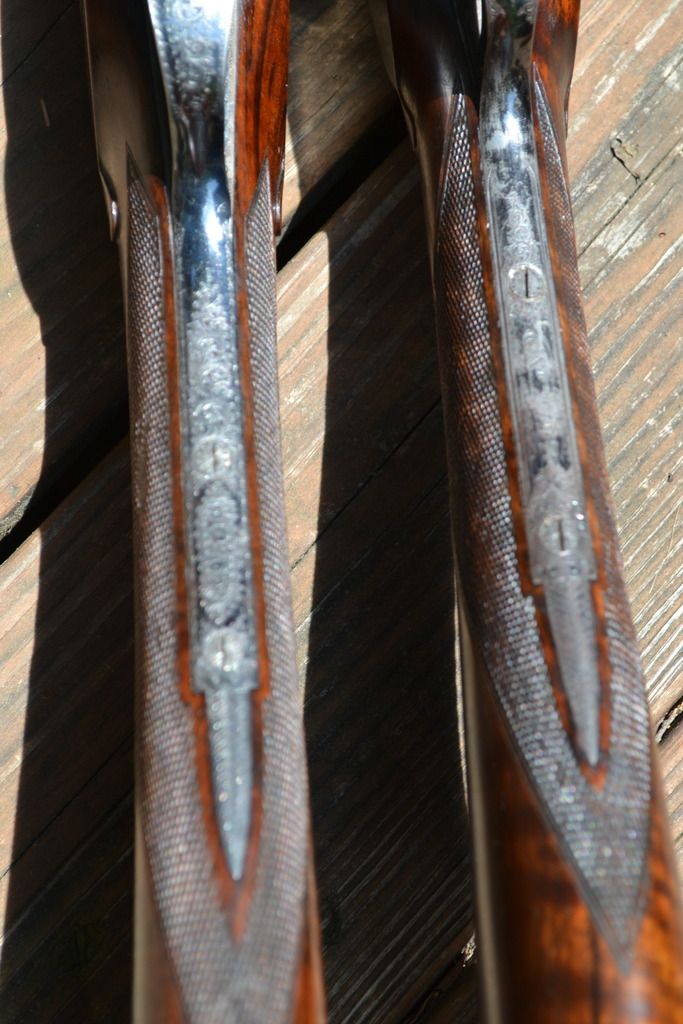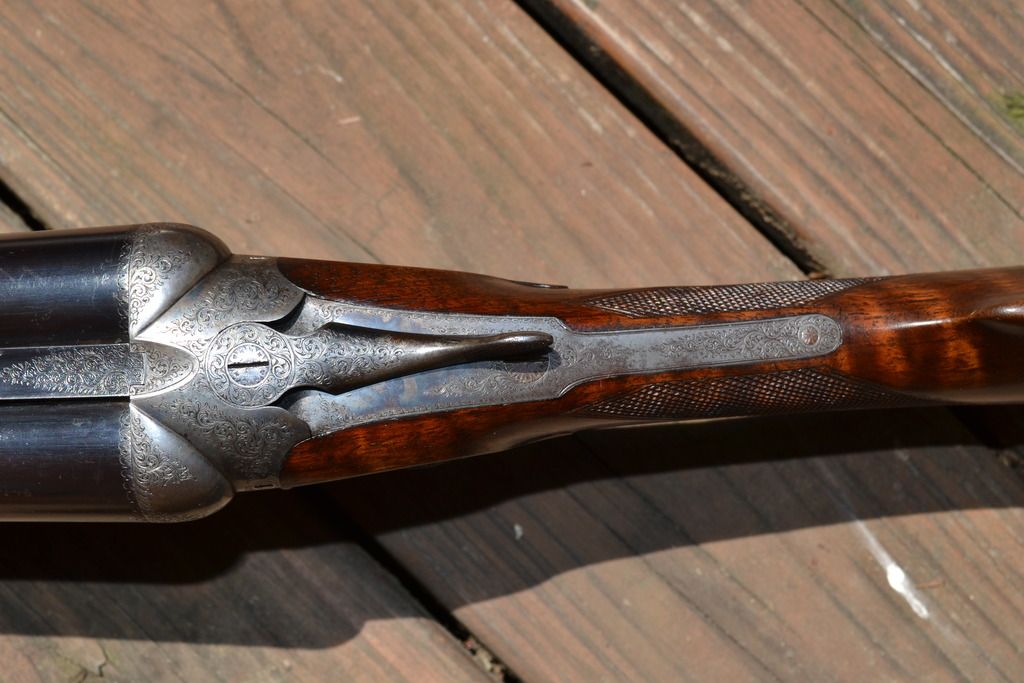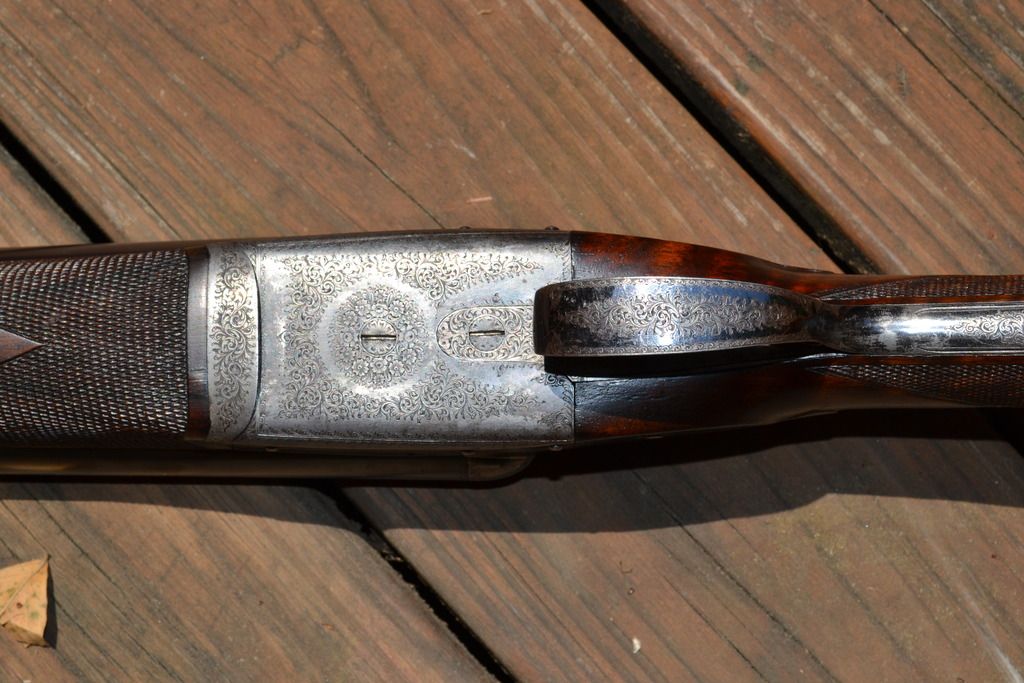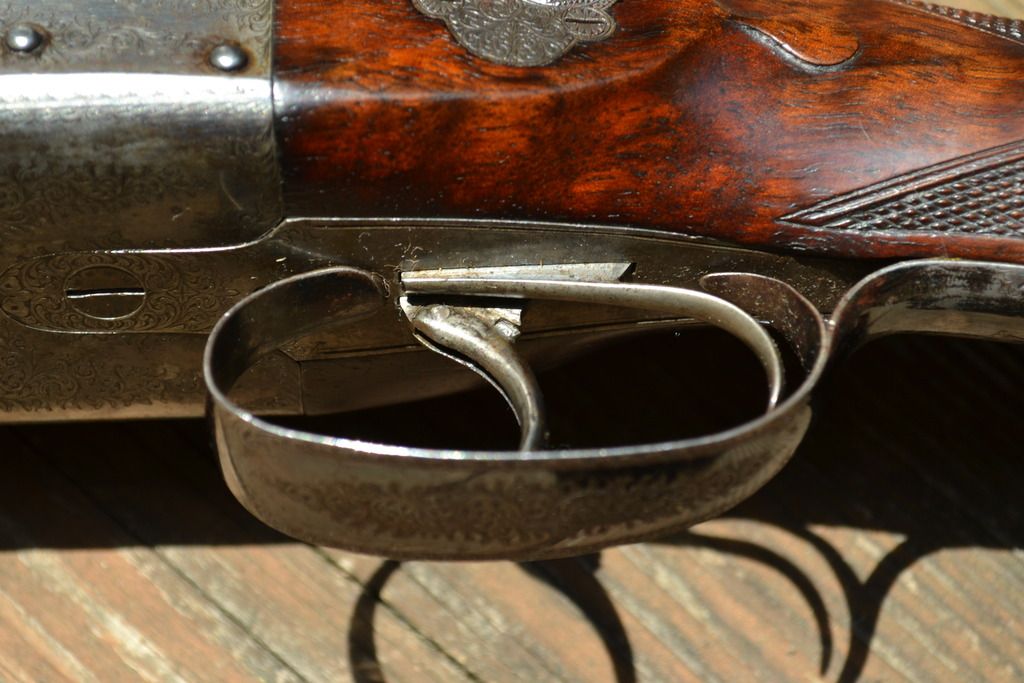Help deciphering proofs on 10 bore William Ford - 06/08/17 12:05 AM
I was at a local shop today and looked at a 10 gauge William Ford. The gun weighed 9.6 lbs with only 26" barrels. I don't know if there are any chokes left (was this cut?) or not.
This shotgun interested me because I already own a William Ford, in my case a 10 bore chamberless gun made in the 1920s. (See thread at: http://www.doublegunshop.com/forums/ubbthreads.php?ubb=showflat&Number=276052&page=1)
The new gun I saw today has both 10 and 12 gauge British proofs. Serial is in the 2K range (mine is in the 14K range). Does this seem like a 12 gauge chamberless gun rechambered and reproved as a 10? Some of the proofs appear to be 1954-1989 but others pre 1904.
Strangely, this has a Greener side safety. Also notable - the action top tank is drifted significantly to the right and the action notably tapers from fore to aft to accommodate the wide breech-face.
TIA, Chris







This shotgun interested me because I already own a William Ford, in my case a 10 bore chamberless gun made in the 1920s. (See thread at: http://www.doublegunshop.com/forums/ubbthreads.php?ubb=showflat&Number=276052&page=1)
The new gun I saw today has both 10 and 12 gauge British proofs. Serial is in the 2K range (mine is in the 14K range). Does this seem like a 12 gauge chamberless gun rechambered and reproved as a 10? Some of the proofs appear to be 1954-1989 but others pre 1904.
Strangely, this has a Greener side safety. Also notable - the action top tank is drifted significantly to the right and the action notably tapers from fore to aft to accommodate the wide breech-face.
TIA, Chris







